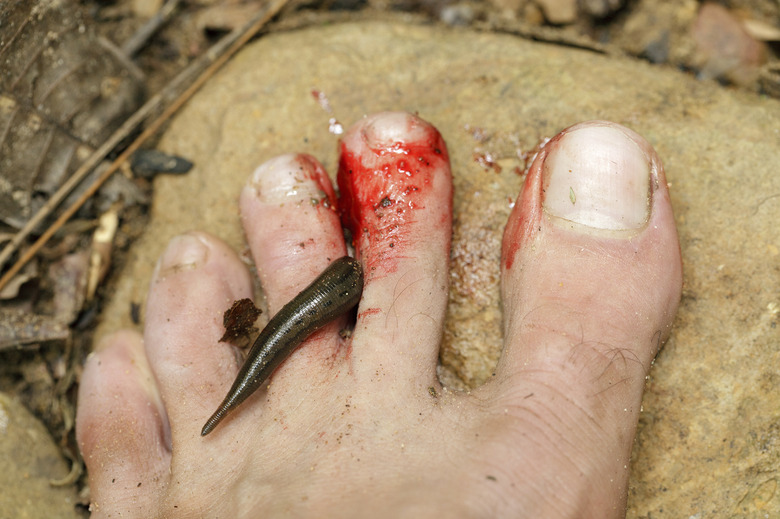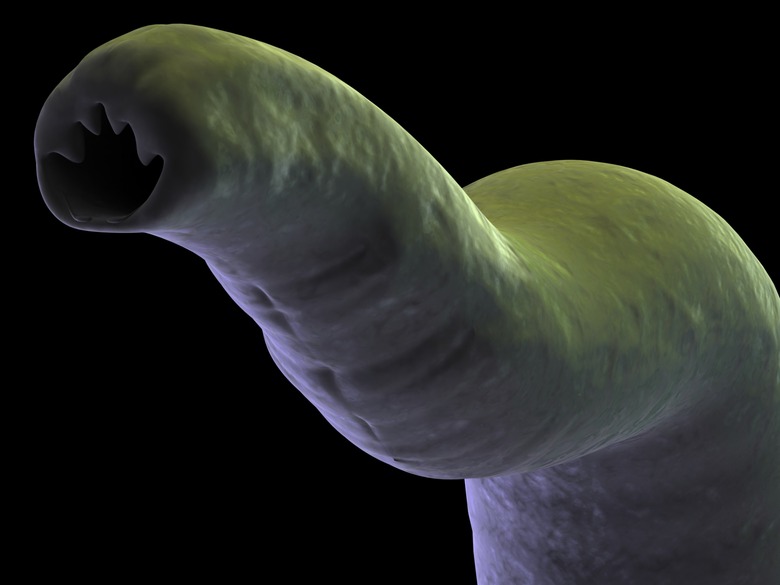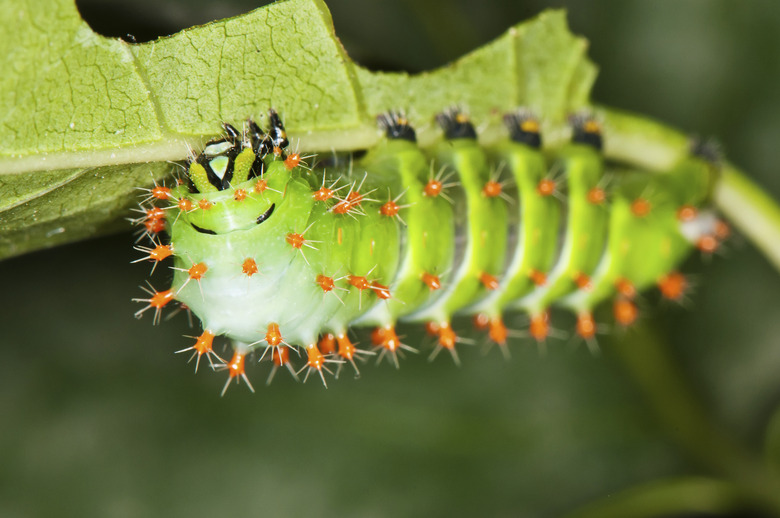Worms That Bite Humans
Worms — bite people? Yes, and some can eat humans alive. Some kinds of worms will bite to eat; others sting with hairs to defend themselves. Some can live and move inside you. Based on such characteristics, some have even been used in medicine for thousands of years — and are still used today!
If You Think Worms Are Boring, You're Right
If You Think Worms Are Boring, You're Right
Some worms bore through humans in their life cycle. Hookworm larva enter through skin, usually bare feet, and travel through the lymphatic system into the lungs. They ride swallowed phlegm to live in the intestines. They attach to the gut and suck blood, laying thousands of eggs daily. Roundworms follow a similar course, eating partly digested food before boring through the gut wall to catch that same lung ride back to the intestines. They lay hundreds of thousands of eggs daily.
Sticky Blood Suckers
Sticky Blood Suckers
Leeches are the best-known parasitic worms. They don't bite with their mouths, though — they have separate, three-bladed jaw structures that cut through skin, and the nearby mouth sucks up the blood. In one meal, they can take in 10 times their weight in blood. They secrete anticoagulants so the blood keeps flowing, and it won't clot in their gut. That's why a bite wound from a leech will continue to bleed after the leech is gone.
Get Within Reach and You Might Get Hurt
Get Within Reach and You Might Get Hurt
Many worm-like animals are predators, and they have large mouth parts to capture prey. Bobbit worms (Eunice aphroditois) burrow in marine environments, and they can be unexpected aquarium pests. The mouth is a pharynx that turns inside out to form hair-triggered pincers capable of slashing prey. Bristle worms (Polychaete) present poisoned hairs that can lodge in your skin, causing paralysis. Slow worms (Anguis fragilis) are legless lizards resembling snakes, but they'll only bite for defense.
Don't Worry -- It's Just a Phase
Don't Worry — It's Just a Phase
The larvae of some insects resemble worms in appearance and behavior. Some of them, such as the screw-worm fly larvae, will invade the bodies of mammals and eat living flesh until they mature, then leave their hosts to pupate on the ground. They're named for their corkscrew movement through flesh. These attack humans and livestock, causing serious injury. Some caterpillars are said to "bite," but they actually sting with defensive poisoned hairs or spikes when touched.
Worms: Just What the Doctor Ordered
Worms: Just What the Doctor Ordered
For centuries, leeches have been used all around the world in bloodletting. The practice faded in the 19th century, but it's still used in some cases, such as draining excess blood from reattached body parts. Maggots will clean wounds of dead tissue, but they leave live tissue alone. Practiced since the times of the Mayas, this is called biodebridement. It's beginning to see more use, because more and more bacteria are becoming resistant to antibiotics.
Cite This Article
MLA
Silbajoris, Alex. "Worms That Bite Humans" sciencing.com, https://www.sciencing.com/worms-that-bite-humans-12378668/. 21 July 2017.
APA
Silbajoris, Alex. (2017, July 21). Worms That Bite Humans. sciencing.com. Retrieved from https://www.sciencing.com/worms-that-bite-humans-12378668/
Chicago
Silbajoris, Alex. Worms That Bite Humans last modified March 24, 2022. https://www.sciencing.com/worms-that-bite-humans-12378668/



